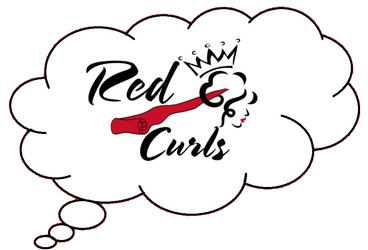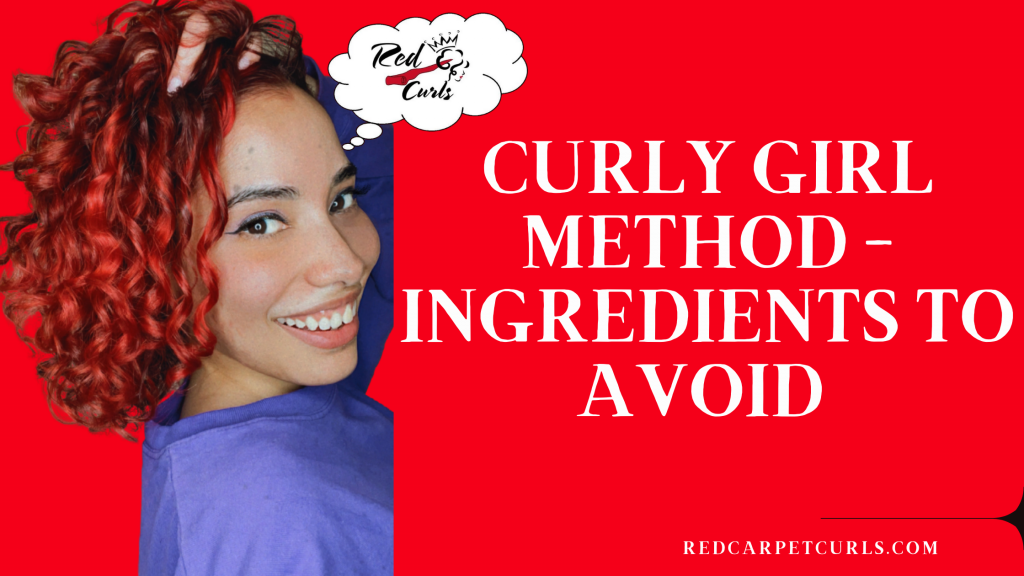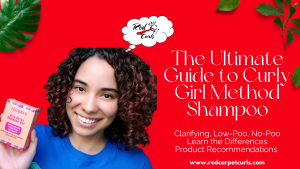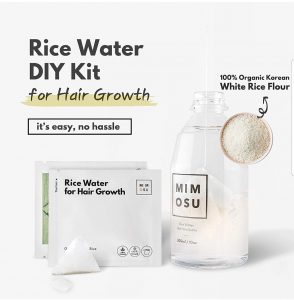Starting or following the Curly Girl Method can seem incredibly overwhelming at first. There seem to be a million ingredients you need to avoid when you have never really paid attention to ingredients before. Not to mention, most of these ingredients have the longest and most complex names, how can you possibly remember them all?
Most of the time, you can’t and that’s completely normal! Don’t overwhelm yourself, the curly girl method experience should not remind you of cramming for midterms.
Over time, you will learn the pattern of reading ingredient labels, you start to spot them enough, and label reading becomes second nature. If you need some help in this area, check out my blog post on How To Read Ingredient Labels.
Otherwise, if you are just starting out, read about the ingredients below, why you should avoid them, and of course, I have included examples of each ingredient. So, just make sure to bookmark this page for future reference.
Sulfates

Naturally Textured Hair (waves, curls, coils) is always at a moisture disadvantage when compared to straight hair. That is because our natural texture slows down the travel of our scalp’s sebum. Let me explain this a bit more to better understand how sulfates affect the hair.
Our scalp, like the rest of the skin on our bodies, produces natural oils (also known as Sebum), to moisturize and protect the skin. These oils are ideal and created uniquely by your body to keep it protected. When someone has straight hair, there are no obstacles in the way to slow down the spread of the sebum from the scalp to the ends. It’s like a roller coaster dip, straight down fairly quickly.
Naturally, textured hair is the opposite. Yes, our scalp still produces these ideal oils to moisturize the scalp and hair, but the texture of the hair is what slows down the movement. If the hair strand structure is curly, there are more spirals and loops the sebum has to travel past to make it to the ends. This slows down the spread of the sebum leaving the hair dry and vulnerable to split ends and breakage.
This is why it is so important to keep naturally textured hair moisturized, but even more than that it is incredibly important not to strip your already vulnerable hair of whatever moisture it does contain.
Sulfates are what’s known as Surfactants or Detergents. They are present in most everyday cleaning products such as your Dawn Dishwashing Liquid. If you have ever washed a pot in your kitchen after dinner, then you know how strong sulfates truly are. Sulfates are the main ingredient responsible for removing dirt and oil by producing suds and cleansing the surface applied to. That is why you are able to scrub a pot with Dawn.
As you can imagine our hair is much more fragile than a pot or dish in a kitchen. Our hair is similar to a plant in the sense that it is a living organism and requires water, nutrients, and proper TLC to grow and produce. Sulfates strip hair of all its natural oil (Sebum) which makes it impossible for hair to flourish.
Sulfates are part of a bigger group (or class) of surfactants known as Anionic Surfactants. This group contains both sulfate and sulfate-free options to clarify the hair. Sulfates are common because they are inexpensive to produce and have been the standard in hair care products since their inception in the 1930s.
Now, let’s think about this. If you need to clarify your hair, and you have an option between a damaging sulfate, or a safer but just as effective option (non-sulfate), Which option are you going to choose when you are trying to give your hair the very best it needs? Seems like an easy enough choice doesn’t it? Frequent use of sulfates dries hair out, leaving it weak and vulnerable. This often leads to split ends and breakage, this will make retaining hair length impossible.
When you decide to follow the Curly Girl Method, from your very first wash day, you are agreeing to give up sulfates. There is never a need for a Final Wash because a sulfate-free anionic surfactant such as Sodium C14-C16 Olefin Sulfonate will always be just as effective as its sulfate counterpart. There is literally never a need to return to a sulfate because a sulfate-free anionic surfactant will remove everything a sulfate does (ex. Silicones, oil, waxes, chlorine, etc)
Examples of Sulfates:
- Sodium Lauryl Sulfate Sodium
- Laureth Sulfate Sodium
- Lauryl Sulfoacetate Sodium
- Lauroyl Isethionate
- Sodium Lauryl Alkyl Benzene Sulfonate
- Ammonium or Sodium Xylenesulfonate
- Ethyl PEG-15 Cocamine Sulfate
- TEA-Dodecylbenzenesulfonate
- Sodium Cocoyl Sarcosinate
- Sodium Laureth, Myreth, or Lauryl Sulfate
- Ammonium Laureth or Lauryl Sulfate
- Sodium Lauryl Sulfoacetate
- Dioctyl Sodium Sulfosuccinate
- Sodium Xylenesulfonate Taurate
Silicones

Silicones are often added to hair products because of their ability to coat the hair in an invisible thin film helping to calm frizz.
Silicones provide great slip to products to improve hair manageability. They help seal in moisture from your washday and also serve as a heat protectant (although if you are on the Curly Girl Method you don’t have to ever worry about finding heat protectants since you never use above medium heat on a hairdryer with a diffuser).
Companies love adding silicones as a cheap alternative to help fight a frizzy hair day. All the benefits of silicones are exactly the reasons why we curly girls avoid silicones.
If you use silicones in your hair regime, the silicones essentially wrap around the hair follicles and strands to seal them, So, no external environmental factors like humidity come in contact with the hair strands causing them to frizz. By sealing out external environments, you are also sealing in whatever state your hair is in. So over time, every time you use these products you will essentially just be sealing in dry hair. Silicones do not allow the hair follicle to properly receive nutrients, water, and even air! This, over time, will cause the hair growth to slow or otherwise completely come to a stop.
If your hair strand is already coated in this invisible barrier, once the moisture runs out, the coating doesn’t allow new moisture in, this is why you need to clarify every single time you use silicones. This will cause you to over-clarify your hair, leaving it dry, brittle, and vulnerable to split ends/breakage.
Instead of using silicones to seal the hair, you can use a few drops of all-natural plant oils such as Jojoba Oil, Broccoli Seed Oil, or Jamaican Black Castor Oil.
Examples of Silicones:
- Amodimethicone
- Aminopropyl triethoxysilane
- Behenoxy Dimethicone Cetearyl methicone
- Bis-Amino PEG/PPG-41/3 Aminoethyl PG-Propyl Dimethicone
- Bis-Aminopropyl Dimethicone
- Bis-Cetearyl Amodimethicone
- Bis-isobutyl Peg/Ppg-20/35/Amodimethicone Copolymer
- Bis-Phenylpropyl Dimethicone
- Bis-Hydroxy/Methoxy Amodimethicone
- Cetyl Dimethicone
- Cetyl PEG/PPG-15/15 Butyl Ether Dimethicone
- Cyclomethicone
- Cyclopentasiloxane and C30-45 Alkyl Cetearyl Dimethicone Crosspolymer Cyclohexasiloxane
- Dimethicone/Vinyldimethicone Crosspolymer
- Dimethicone
- Divinyldimethicone/Dimethicone Copolymer
- Dimethicone Propyl PG-Betaine
- Dimethiconol
- Dimethiconol meadowfoamate
- Di-Isostearoyl Trimethylolpropane Siloxy Silicate
- Dimethicone
- Diphenyl Dimethicone
- Disiloxane
- Trimethylsiloxysilicate
- PCA Dimethicone
- Phenyl Trimethicone
- Phenyl Propyl Dimethyl Siloxy Silicate
- Polysilicone-18 Cetyl Phosphate
- Silicone Quaternium-16
- Silicone Quaternium-18
- Silicone Quaternium-22
- Silicone Resin Spheres
- Simethicone
- Simethicone Stearoxy (or Stearyl) Dimethicone
- TrimethylSilylamodimethicone
- Trimethylsiloxyamodimethicone
- Trimethylsiloxysilicate
- Trisiloxane
- Hexamethyldisiloxane
Parabens

A 2004 scientific study/paper entitled Concentrations of Parabens in Human Breast Tumors by Darbre showed the presence of parabens in breast cancer tissue. While the study doesn’t conclude if the parabens caused it the fact that they are there is what causes concern. Another study found that 99% of Americans had some form of parabens in their urine. While we do not yet know if exposure to parabens directly causes cancer we know they share the same space and help contribute.
Parabens are water-soluble chemicals added to products to extend the shelf life of a product. Natural products often have a very short shelf-life, which is why they add parabens as a cheap way to keep the formula from developing bacteria while still on the shelf. This is why normally our hair products are good for about a year before we have to replace them.
The reason we advise avoiding parabens is that parabens can mimic the human hormone estrogen. This means that they may interfere with the hormone balance of your body, no matter your sex.
According to Healthinline.com, The estrogenic activity of parabens has been shown to interfere with the way that your body’s hormones regulate. This is cause for concern because it could mean parabens influence reproductive activities, like pregnancy and menstruation. Estrogenic activity is associated with certain forms of breast cancer, parabens have been found present in breast tumors
Research has also demonstrated that parabens can easily absorb through your skin, and the daily application of beauty products with parabens can cause them to accumulate in your system. Steady exposure to parabens may play a part in the growth of breast cancer cells in women.
Some people have an allergic reaction to parabens. This reaction can include:
- Redness
- irritation
- itchy skin
- flaking
- hives
Examples of Parabens:
- Benzylparaben
- Butylparaben
- Ethylparaben
- Isobutylparaben
- Isopropylparaben
- Methylparaben
- Propylparaben
Drying Alcohols

Drying alcohols are exactly what they sound like, an ingredient that dries the hair out over time. Drying alcohols are short-chained alcohols, meaning they evaporate quickly when applied to the hair. In rare cases, this may be beneficial, but in most cases, drying alcohol hardens the cuticle layer of the hair by removing the moisture present in the strand.
This essentially means drying alcohol robs your hair strands of the moisture it needs.
According to Naturallycurly.com, “ In shampoos and conditioners, drying alcohols primarily help to mix oil and water and sometimes are antiseptic. These small-chain alcohols are small enough to penetrate the hair shaft and are often the culprit of frizz. Isopropyl alcohol is used to absorb other substances into the hair follicles and is a common ingredient in hair color rinses and the absorption of dyes. Believe it or not but this is a home remedy in the removal of head lice and some loc wearers use it for that too.”
Since these alcohols help the hair dry quickly, it might be beneficial sparingly to those with fine density hair or wavy hair (the most common types to encounter build-up). If you have a tighter curl pattern, definitely never go near these alcohols as they will dry out hair further and cause damage such as split ends and breakage.
But overall, a good rule of thumb is to avoid these alcohols in general.
Examples of Drying Alcohols:
- Ethanol alcohol
- Ethyl alcohol
- Propanol alcohol
- Alcohol denat.
- Isopropyl alcohol
- Isopropanol alcohol
- Benzyl alcohol
Synthetic Waxes

Similar to silicones, synthetic waxes coat the cuticle layer of the hair in a thin invisible barrier. The purpose of which is to lock all the moisture into your hair and give you fantastic shine. The problem, similar to silicones, is that once the moisture in your hair strands has depleted, the invisible barrier from the wax makes it impossible for new moisture to penetrate and revive the strand until you clarify it out of your hair. This can lead to dry, brittle hair, split ends, and breakage.
The main difference between waxes and oils is their structures. Waxes have a structure that makes them very hydrophobic (basically meaning it hates water). Applying synthetic waxes to hair makes it impossible to moisturize hair again until you wash all the wax out with a harsh clarifying wash.
While synthetic waxes can throw off your entire routine, that doesn’t mean all waxes are bad! There are waxes that naturally occur in the environment.
Natural waxes include beeswax, jojoba wax, hemp wax, etc.
Waxes are derived from:
- Animals – e.g. beeswax, lanolin (from sheep)
- Plants – e.g. jojoba wax, hemp wax, castor wax, rice bran wax, and Petroleum – e.g. paraffin wax, petroleum jelly
Mineral Oil/ Petroleum

This is another ingredient (like silicones and waxes) whose main purpose is to seal and protect the hair, and again, this is not always the case.
Mineral Oil/Petroleum has been used for decades as a cheap option to seal moisture in the hair. For years it has been marketed as a cheap solution to treating scalp issues such as dandruff. Unfortunately, it just isn’t true.
Mineral oil does not moisturize the scalp or hair.
It serves as an impenetrable barrier to keep moisture locked into the hair. Mineral oil does not penetrate the hair strand, it simply coats it with a barrier similar to silicone, to keep moisture in hair for longer periods of time.
The problem with this is the fact that the barrier makes it impossible to add more moisture to the hair. The barrier ends up clogging the hair follicle which can hinder hair growth because the mineral oil won’t allow vital nutrients to enter the follicle. Without nutrients or new moisture growth will stop and hair strength and elasticity will diminish. Mineral oil must be removed with a sulfate-free clarifying shampoo.




